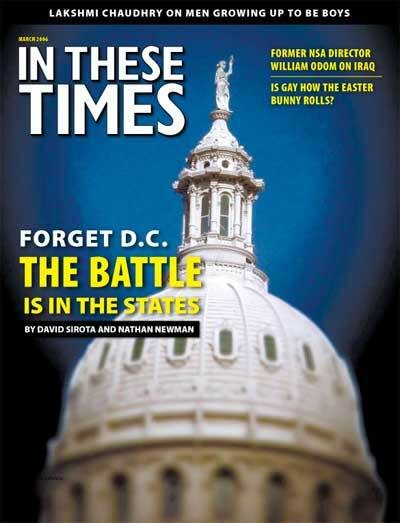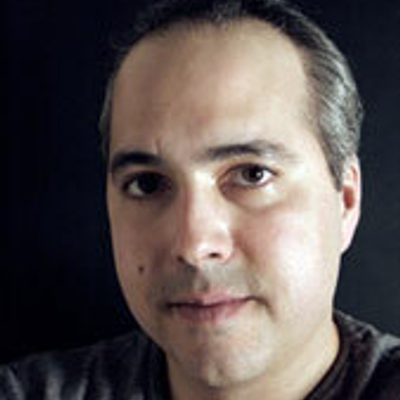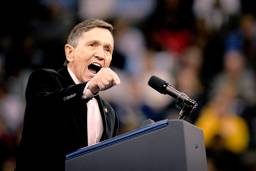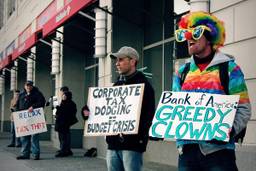Lies, Damn Lies and Poverty Statistics
How an archaic measurement keeps millions of poor Americans from being counted
Christopher Moraff

Standing before the House rostrum on the night of January 31, President George W. Bush beamed as he recounted the state of the country’s economic health.
“Our economy is healthy,” the president declared during his State of the Union address. “Americans should not fear our economic future, because we intend to shape it.”
What shape Bush has in mind is clear. While the administrators of the president’s economic policies champion 11 consecutive quarters of GDP growth, Bush-mandated tax cuts ensure that the government will continue to make less while the rich and large corporations eagerly fill their coffers. In 2005, federal revenues were just 17.5 percent of GDP, 1 percent less than the previous 50-year average. By contrast, the Feb. 12, 2005 Economist reported that in 2004, after-tax corporate profits reached their highest level as a proportion of GDP in 75 years.
In the meantime, everyday Americans are spending more than they make. For the second straight year, personal savings have been in the red, a phenomenon that has only happened once before, at the height of the Great Depression. Research conducted by the Economic Policy Institute shows that the indebtedness of U.S. households has risen nearly 36 percent over the last four years. As a result, the gulf between the “haves” and “have nots” is reaching crisis proportions.
Compounding the crisis is an archaic method for determining America’s poverty rate, which is then used to formulate the funding of programs that alleviate poverty. When President Bush sat down with his advisors to draft his FY 2007 budget, it’s debatable whether he took the time to examine the national poverty statistics provided each year by the Census Bureaus. What’s not debatable is that the Census Bureau’s methodology is woefully inadequate.
The current method for measuring poverty in the United States was developed in 1963 by a young statistician for the Social Security Administration named Mollie Orshansky. Using data from a 1955 Department of Agriculture survey, Orshansky developed a set of thresholds that set a poverty line at three times the annual cost of feeding a family of three or more under Agriculture’s “low-cost budget.” She developed the thresholds purely for her own research and said at the time that her data’s limitations would yield a “conservative underestimate” of poverty.
At that, Orshansky’s work might well have passed into history. But on January 8, 1964, President Lyndon Johnson uttered the famous words: “This Administration today, here and now, declares unconditional war on poverty in America.” It was a war Johnson intended to win, but missing was an official yardstick for gauging the problem and its ultimate resolve.
Not just any measure would do. Rather, the administration required a threshold that was sufficiently conservative to render eradication of poverty attainable – winning the war by moving up the finish line. Orshansky’s model fit the bill. But first, the Office of Economic Opportunity substituted the Agriculture Department’s “economy food plan,” which was still another 25 percent lower than the “low cost budget” originally chosen by Orshansky. Almost immediately, the new thresholds had an effect, and by 1968, the nation’s official poverty rate had dropped by more than 10 million.
Forty years later, with the War on Poverty no closer to being won, the Census still relies on the Orshansky Thresholds to calculate each year how many Americans live in poverty. That number then determines the nature and distribution of an array of federal policies and programs aimed at addressing the issue.
As critics have pointed out for decades, limitations of the Orshansky formula are manifold. For one, food doesn’t account for one-third of a family’s budget today, making it an unrealistic cost-of-living measure. The model also fails to take into account housing, transportation or health care – which together can amount to more than triple the average cost of food. Add in regional variations, childcare costs and the growth of single-parent families, and it’s fair to say that the Census Bureau is systematically undercounting the number of poor Americans.
Census data released this past August suggests that the number of Americans in poverty grew slightly in 2004 (the most recent year for which data is available) to 12.7 percent from the 12.5 percent recorded the previous year, representing about 37 million Americans. Since 2000, the number of people living in official poverty has increased by 5.4 million. But according to experts, that number vastly underestimates the real total. Duke University sociology professor David Brady puts it this way: “Each August we Americans tell ourselves a lie. The entire episode is profoundly dishonest.”
Brady says that based on his calculations the real number is closer to 18 percent – or 48 million Americans currently unable to afford the most basic necessities. Less conservative estimates have put the numbers of poor at 25 percent, or more than 70 million Americans.
Robert T. Michael, a renowned public policy scholar at the University of Chicago, explains the shortcomings: Orshansky “set a target level of income for a family of four at $3100 in 1963 based on evidence that she put together that basically was using 1955 data. That exact same number – augmented only by cost of living – is the official measurement of poverty today. If they’d done that at the time of Abraham Lincoln, you know, set a rate something like 100 years before, then we’d have a really low level of poverty today.”
What this means in real numbers is that the average poverty threshold for a family of four in 2004 was an annual income of $19,307. It was $15,067 for a family of three; $12,334 for a family of two; and $9,645 for individuals. “It’s really egregiously in error,” Michael says.
In 1992, at the prompting of the Joint Economic Committee of Congress, the National Academy of Sciences formed a panel to examine the poverty thresholds. Michael was asked to chair the panel.
After three years of work, in 1995 the panel released its report, “Measuring Poverty: A New Approach,” which proposed a number of reforms, notably a change to a measure adjusted regionally that takes into account variations in the cost of housing. But nobody in the federal government seemed ready to budge.
“We’ve gotten some movement and a lot of attention,” Michael explains, “but it hasn’t changed anything because politicians are politicians.” He blames the interests of the states – which have become financially dependent on the status quo – and an unwillingness of any administration to accept such a drastic rise of poverty on their watch.
“If they wanted to change it, it would be pretty easy to do,” agrees Brady. “The real reason it hasn’t been changed is because of politics.”









